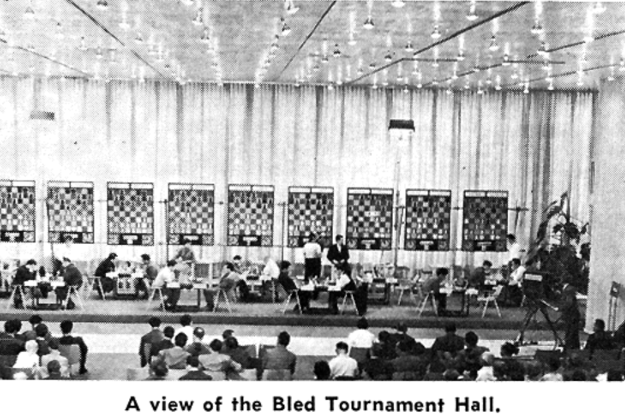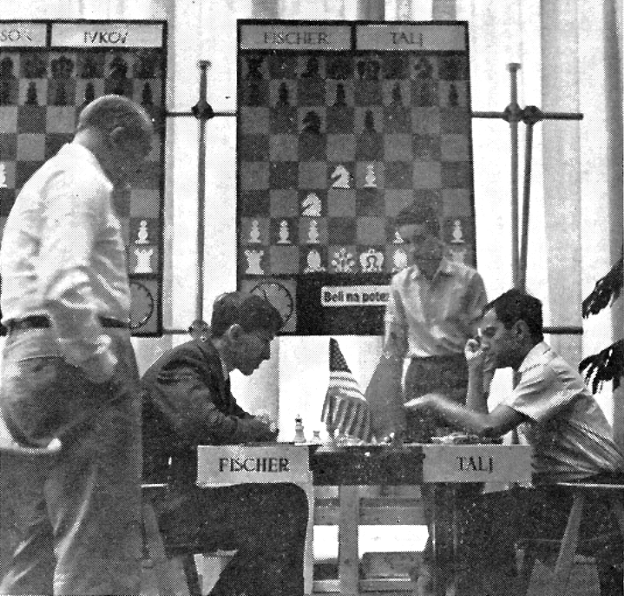


 Thirty years after Alexander Alekhine dominated the 1931 Bled Tournament, obtaining an undefeated 20½/26 score against strong opposition, the then-Yugoslav city organized a jubilee celebration to commemorate the event. A 20-player single round-robin tournament took place from September 3 until October 3 at the traditional chess city.
Thirty years after Alexander Alekhine dominated the 1931 Bled Tournament, obtaining an undefeated 20½/26 score against strong opposition, the then-Yugoslav city organized a jubilee celebration to commemorate the event. A 20-player single round-robin tournament took place from September 3 until October 3 at the traditional chess city.
About four months after losing the World Championship title to Mikhail Botvinnik, Mikhail Tal was among the participants. An 18-year-old Bobby Fischer also made his way to Bled, where, besides Tal, he joined the likes of Tigran Petrosian, Paul Keres, Svetozar Gligoric, Efim Geller and Miguel Najdorf.
In the end, Tal, aged 24 at the time, prevailed. The magician from Riga scored eleven wins and only lost to Fischer. The young American was the only player to finish undefeated, but his eight wins left him a full point behind the Soviet genius in the final standings table.
Going into the final round, Fischer was trailing Tal by a half point. The rising star from Chicago had the black pieces against Borislav Ivkov, while Tal faced a 51-year-old Najdorf. Fischer and Ivkov drew, as Tal got the better of Najdorf after converting an endgame with rook and bishop against rook and knight — which takes us to our riddle.
The duel bishop against knight can be very deep and fascinating. On an 8x8 board, both pieces are approximately of equal value, and who gets an edge depends on the circumstances. In this case, Tal’s bishop is superior. But the advantage is surprisingly difficult to convert.
Was the endgame winning all along? Or could have Najdorf held a draw?
Please share any analysis you come up with on the comments section. You may also like to use more powerful engines to assist you in your efforts. Fat Fritz, for instance, goes for some unconventional continuations and surprises. I will evaluate your submissions and discuss them with you.